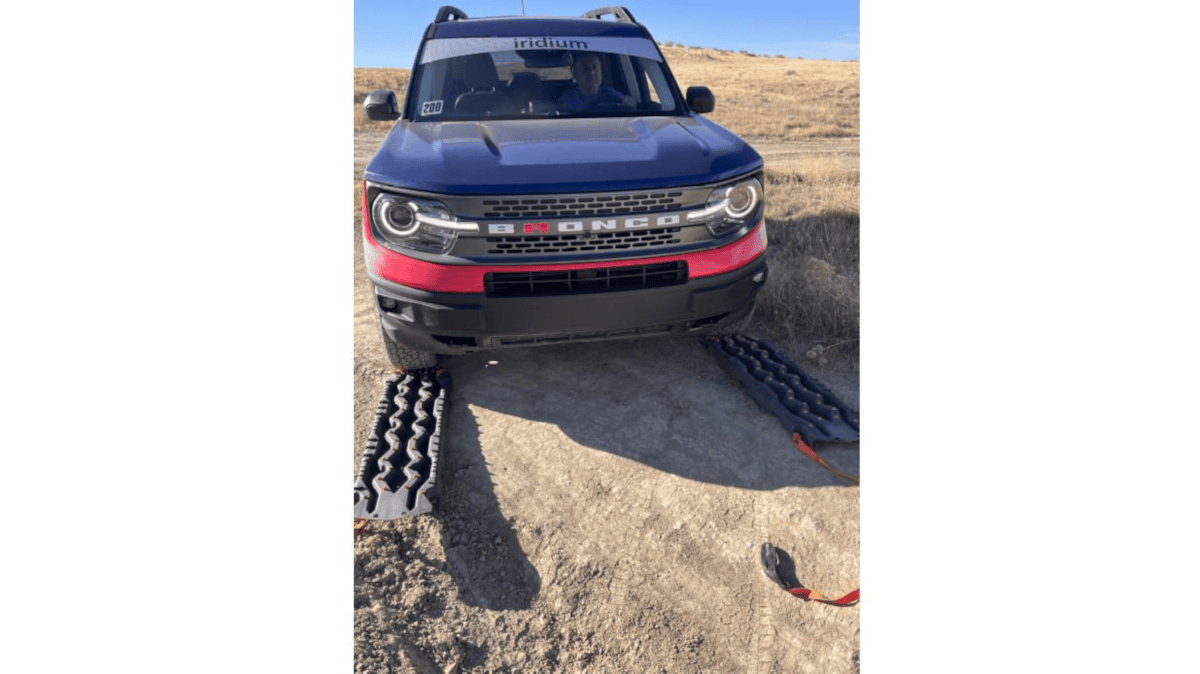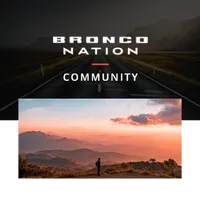I’ve written a couple of articles now on recovery items you should have in your Bronco, including shackles and recovery straps. In this article, I will discuss one of my favorite items: traction or recovery boards. These are essential to carry. They are incredibly versatile and allow for self-recovery in various vehicles and situations. They have saved me from some of my not-so-smart decisions and being stuck in the sand many times.

Traction boards are a relatively recent invention.
Although there are many companies out there that manufacture amazing products, I’ll start by giving a historic nod to Australian Brad McCarthy with his invention of the modern nylon-style board, which came to market in 2005. Before that, there were various homemade boards. The coolest overlanders (was that even a term then?) carried pieces of Marston Mat, which is a perforated steel planking designed in WW2 to build temporary bridges and even runways. Thank goodness that today’s traction boards are much lighter! It’s very easy to carry a set of two, or better yet, four, in your Bronco or Bronco Sport.
My husband Brian tells a story of getting a vehicle stuck in the backcountry many years ago. After several hours of an unsuccessful mud extraction, he walked out, got home, and built homemade boards by attaching metal strips to 4-foot-long 2x8s. Then, he went all the way back and got his vehicle out. At every Bronco Off-Roadeo, as Trail Guides, we teach you to be proactive or reactive in your decisions. With off-roading, it’s not a matter of “if” you get stuck but “when.” Being proactive ––having the right equipment with you and knowing how to use it –– can turn a frightening event into a minor inconvenience.
Traction boards are made of nylon for flexibility and more.
Modern traction boards are made of nylon or nylon blends, which makes them very strong, flexible, and lightweight. Each board has some type of design pattern and lug placement that aids in allowing the tire to gain traction, once you can get it under the tire, that is.
Using traction boards is easy once you know the steps, and don’t forget the shovel.

It’s important to understand a few things about the boards before using:
First: An edge is placed under the tire, meaning it is directional. That direction should be clearly labeled on the board. But, before you can place the boards, you’re probably in for some work to clear away the sand or mud so you can wedge the tapered end of the board under the tire. One of drivers’ biggest mistakes when getting stuck is not giving up and stopping soon enough. It’s important to stop the vehicle when you’ve lost forward momentum because all you’re doing after that point is sinking the vehicle in deeper and making a lot more work for yourself (ask me how I know). Although some boards have an end marked “shovel,” and you can, in fact, clear material away with them in a pinch, I find them too bulky. I can clear much more material, much more quickly, with a set of portable shovels. I say “set” because, hopefully, I have a co-driver able to assist.

Next, with your hopefully sturdy shovel, you need to clear away the tires in the easiest direction to extract the vehicle. It doesn’t have to always be moving forward; if you’re on a hill, let gravity help you back down. When you get stuck, it’s easy to start to panic. Take a moment, take a breath, and make a plan. If you’re like me, be prepared to repeat or revise that plan as needed based on the outcome. Self-recovering a vehicle is not a race; most often, a slow and thoughtful approach will result in a much quicker extraction.
Wheel spin will damage your boards.
This next step will probably determine how long your traction boards are going to last or how soon they will require repair, dependent on the type you own. Once they are successfully in place, move slowly onto the boards, whether you’re using two or four. Depending on the terrain, you may see the boards pull under your tires. Accelerate out and maintain momentum; don’t spin your tires. Many drivers create wheel spin by accelerating too fast, which will burn off the lugs on the board.
Keep your boards on a leash.
It’s also critical to “leash” your boards. Traction board leashes are usually available as an accessory with your boards and easily attach to them, allowing you to pull them out of the snow or sand after use and locate them. The weight and action of the vehicle movement often bury the board just under the surface, and it’s incredible how difficult finding it can be. The leash will stay above the sand and help you instantly locate it. There’s one board of mine lost in the dunes of Glamis, and I’m sure there are many more out there, especially when we choose the sand color over the safety orange. Losing a board is expensive, and doing so reduces your recovery arsenal for the rest of your trip, making leashes worth the small investment.
Boards are versatile and can be used in many different situations.

Traction boards are often used in deep sand, snow, or mud, but with a high-quality board, there are many more uses. I’ve seen them used as ramps for bridging ditches, climbing over large rocks, and creating more clearance, especially in my Bronco Sport. I find both the ARB and ActionTrax boards to be very flexible and tolerant of extreme use, bending under the vehicle’s weight and then flexing back into shape. In fact, once you get accustomed to how easy they are to deploy, you can get creative in recovering everything from a Bronco DR down to a Subaru stuck in the parking lot.
Owning boards and being stuck: What happened next?
This year, in the Rebelle Rally, I carried six traction boards, four of the standard size (two ARB and two ActionTrax), and one new addition: one set of mini boards, inside of my Bronco Sport with all our camping and other gear. I discovered that four boards don’t take up much more space than two because they can be stacked together when stored.

In our most common “stuck” situation, which turned out to be sand, we placed the mini boards in front of the rear tires and one set of standard boards in front of the front tires. We then placed the other set in line to be run over as the vehicle gained momentum from the extraction. This allowed a much longer length of traction as the fronts hit the second set of boards while the rears contacted what was once the boards under the front tires. We got pretty good at this … not that we were stuck that many times.
A specific use of the mini boards happened when another vehicle became stuck in the bottom of a very small witch’s eye, nose down. The steep descent of the vehicle, followed by a steep climb, made placing a longer traction board very difficult without excessive digging. The mini board worked perfectly at the bottom, followed by the placement of the full-length boards on the uphill climb.
Last thoughts from me: please share YOUR stories on traction boards.
One last story that I’ll discuss in more detail on another product in a future article is using a recovery jack to lift a wheel to place the board directly under a tire in an extreme situation. There are so many uses, even as a jack stand or a vehicle leveling device to give you a better night’s sleep in your rooftop tent. I’m sure there are many more uses that I haven’t even touched upon. Do you have a story on your traction boards? Share it in the comments below.
In need of recovery gear? Check out the options in the Bronco Nation store, from ARB to Ford Performance. Members get special pricing!


Comments
You must log in or register to post here.